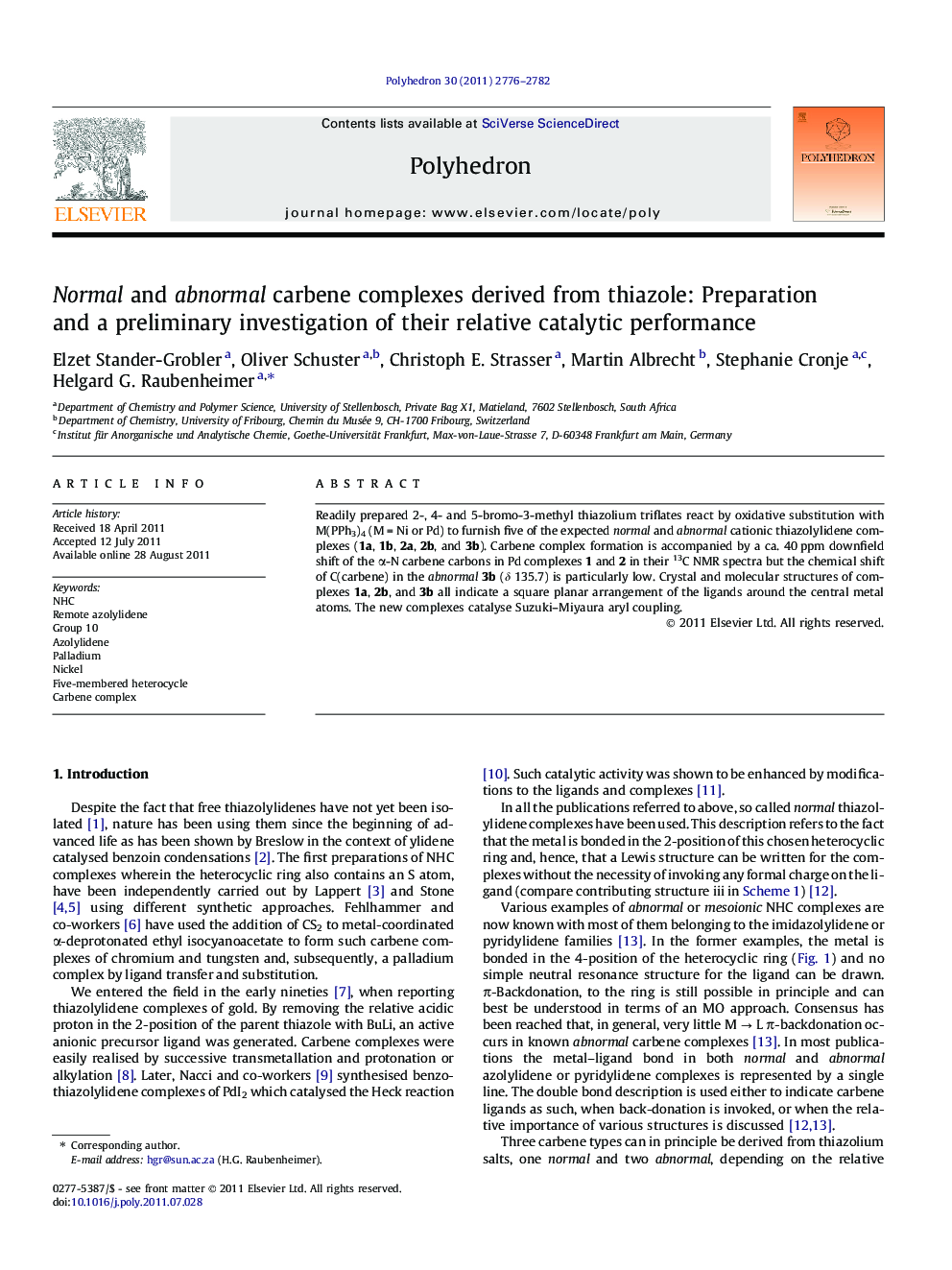| Article ID | Journal | Published Year | Pages | File Type |
|---|---|---|---|---|
| 1338386 | Polyhedron | 2011 | 7 Pages |
Readily prepared 2-, 4- and 5-bromo-3-methyl thiazolium triflates react by oxidative substitution with M(PPh3)4 (M = Ni or Pd) to furnish five of the expected normal and abnormal cationic thiazolylidene complexes (1a, 1b, 2a, 2b, and 3b). Carbene complex formation is accompanied by a ca. 40 ppm downfield shift of the α-N carbene carbons in Pd complexes 1 and 2 in their 13C NMR spectra but the chemical shift of C(carbene) in the abnormal3b (δ 135.7) is particularly low. Crystal and molecular structures of complexes 1a, 2b, and 3b all indicate a square planar arrangement of the ligands around the central metal atoms. The new complexes catalyse Suzuki–Miyaura aryl coupling.
Graphical abstractThe thiazolium character of their precursors is largely retained in the molecular structures of normal and two types of abnormal thiazolylidene complexes of Ni(II) and Pd(II). Suzuki–Miyaura coupling is less effectively catalysed by these complexes than by their pyridylidene analogues.Figure optionsDownload full-size imageDownload as PowerPoint slideHighlights► First comparison of three potential bonding modes in thiazolylidene complexes. ► First examples of two unusual thiazolylidene bonding modes. ► Illustration of different π-bond ring localisations than in pyridylidenes. ► Comparison of precatalyst activities with pyridylidene complexes.
